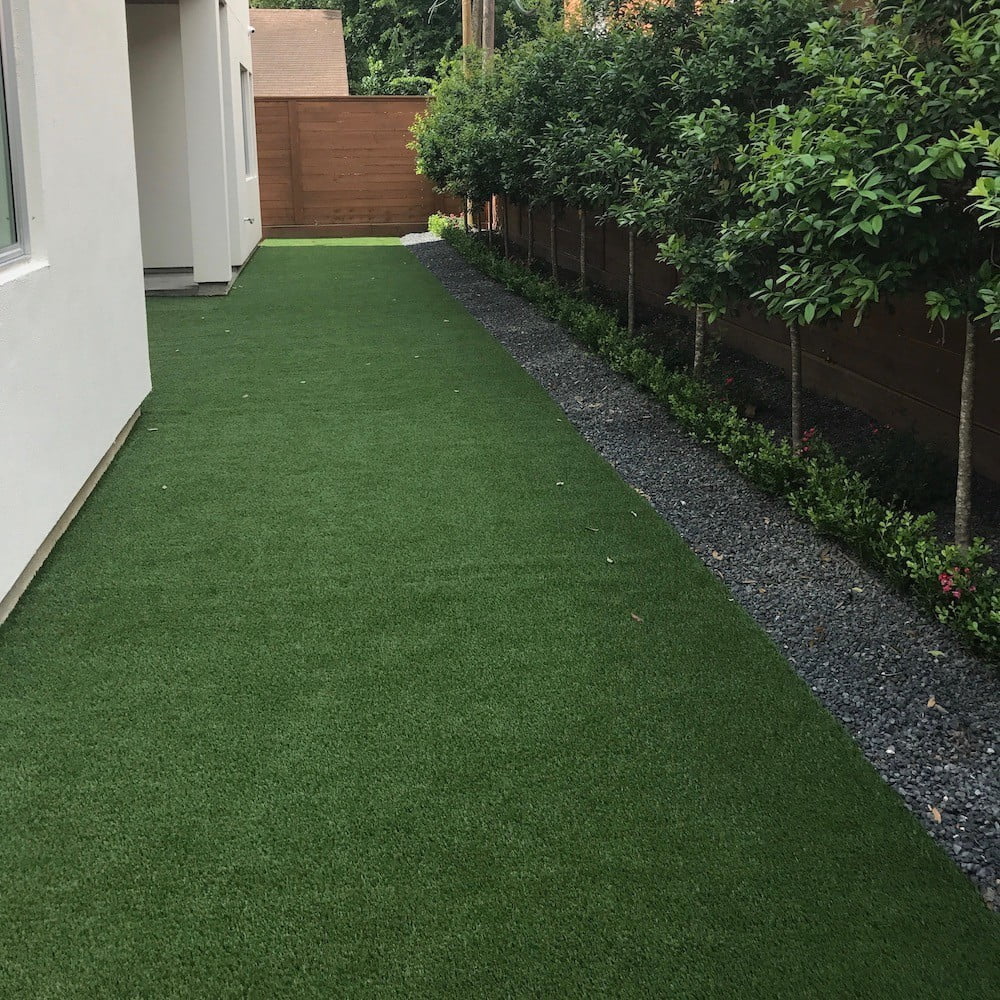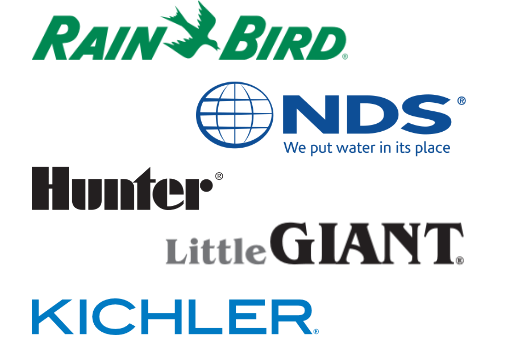Expert Landscape Drainage Solutions in Houston, Texas
Is your lawn or landscaping bed retaining water in unwanted areas? Are your landscape beds eroding quickly, causing you to lose mulch and topsoil? In simpler words, your property has a landscape drainage problem, and you need a solution. We are a local Houston landscape drainage company that provides solutions and services for landscape drainage in most surrounding communities. This page will teach you the different techniques you can implement on your property to create a landscape drainage system.
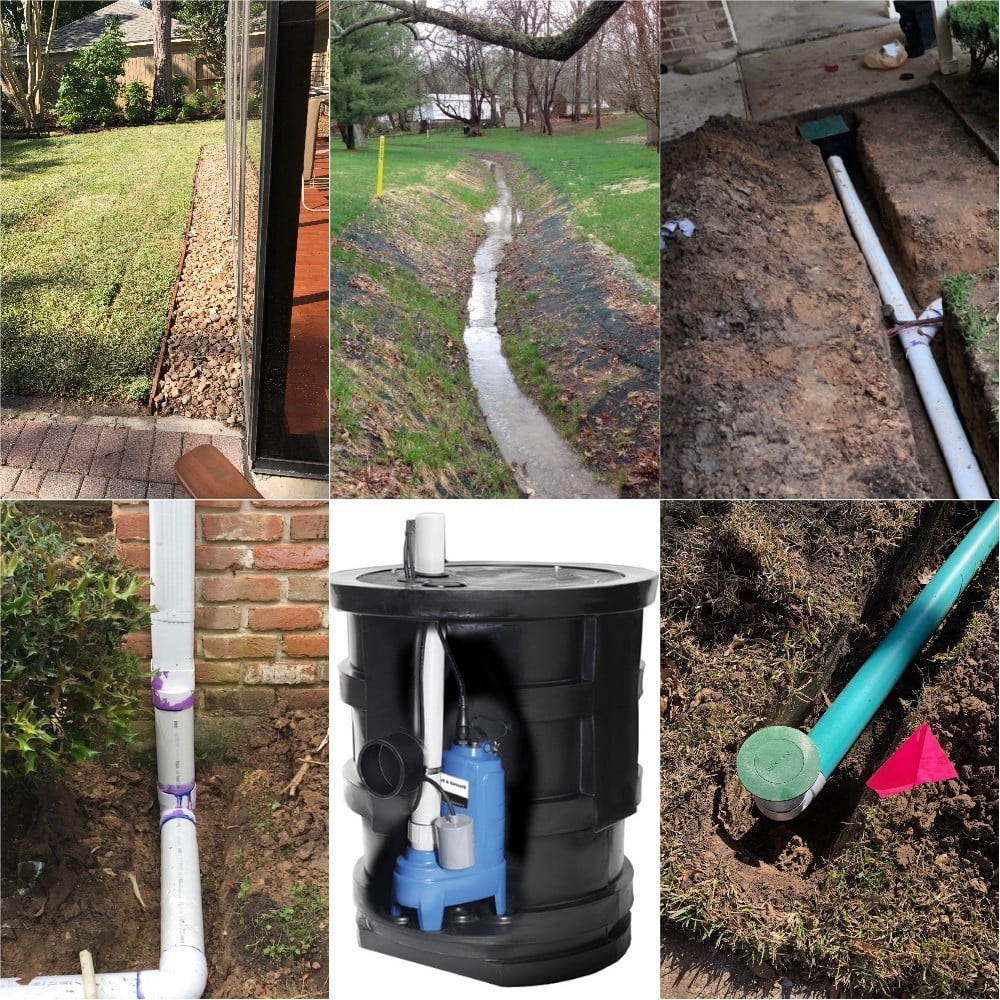
Landscape Drainage Installation & Solutions
Stop unwanted water! We install various drainage systems to remove it from your property.
Remember, water flows downhill! If it has nowhere to go, it floods your yard.
We’re experts in yard drainage. We build systems that use gravity to get water out.
Multiple drainage options exist. In Houston, most homes can use one of these solutions to fix water retention:
- French Drain Installation
- Catch Basin Drain Installation
- Sump Pump Installation
- Downspout Drainage and Diverters
- Landscape Drainage Pop-Up Emitter
French Drain Installation
French Drain: We Install It! This sloped trench uses a perforated pipe with gravel to remove water.
Proper installation is key! A well-built French drain keeps water away from your foundation.
Sized for Houston Homes: We typically install 18″ deep, 8″ wide drains with 4″ perforated pipes.
Catch Basin Drain Installation
We use a catch basin drain system to divert water away from your home by taking the water from the home’s gutter system. It can also be used to channel water out from a low spout section of your lawn. Furthermore, the Catch Basin consists of plastic and PVC or plastic piping to channel out water. Certainly installing a catch basin is a great investment into your property.
Sump Pump Drain Installation
In the Houston area, most people are unfamiliar with a sump pump drain. Unlike any other landscape drainage system, a sump pump drain is a multi-purposeful, submersible, and electric-powered pump. Indeed, if you are experiencing abnormal flooding, more likely you need to install a sump pump.
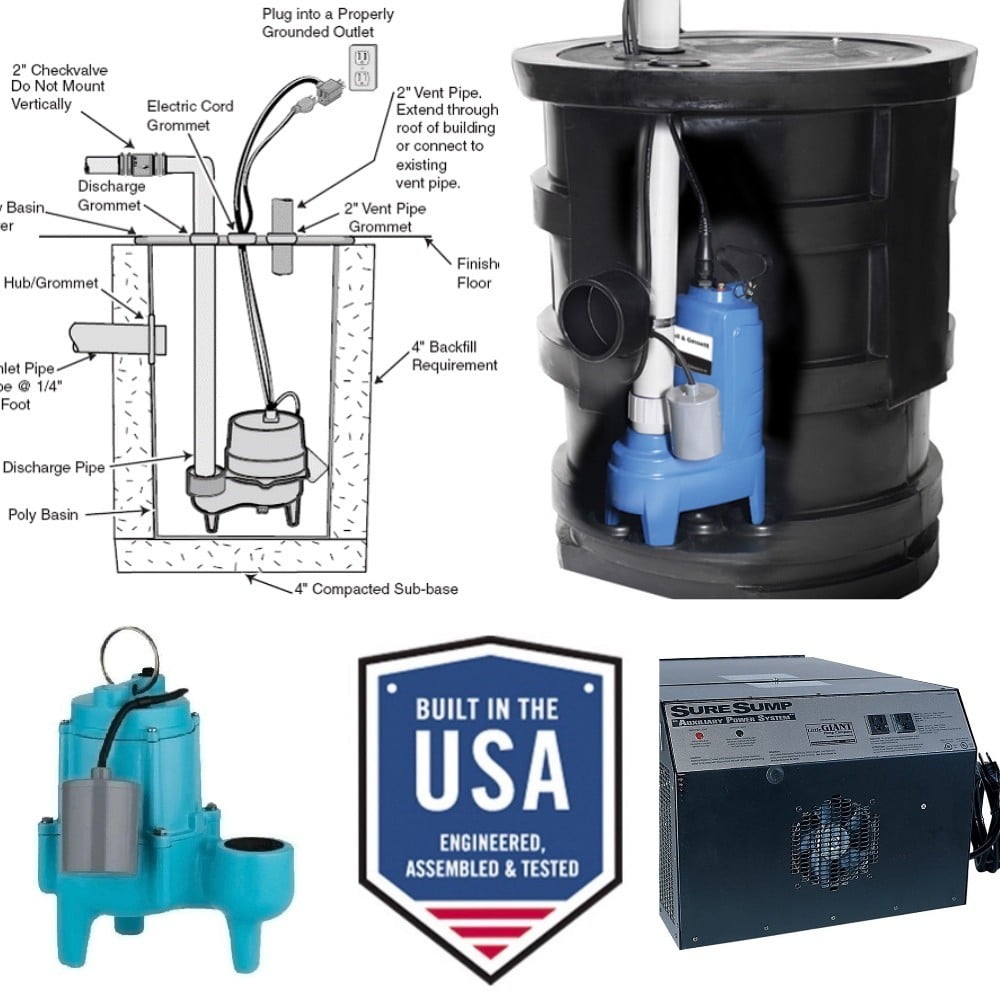
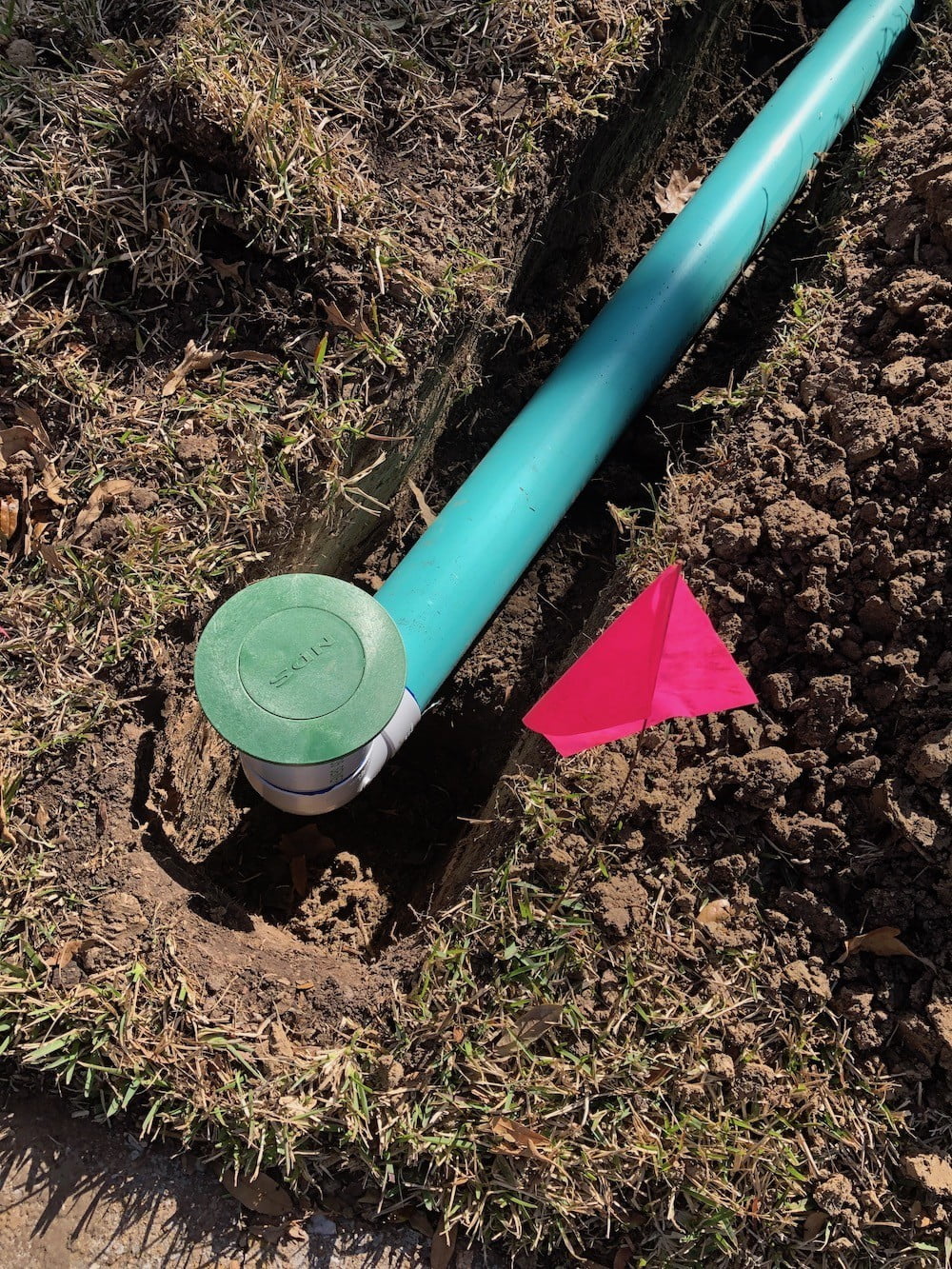
Landscape Drainage Pop-Up Emitter
A pop-up emitter is a point that releases the water from a more extensive drainage system. The water pressure causes the top to “pop-up” and release the excess water. It closes on its own when there is a lack of pressure. The pop-up emitter activates when there are no cuts to the curbs. It works very well with the downspout drainage system. Do not forget to submit a FREE quote today!
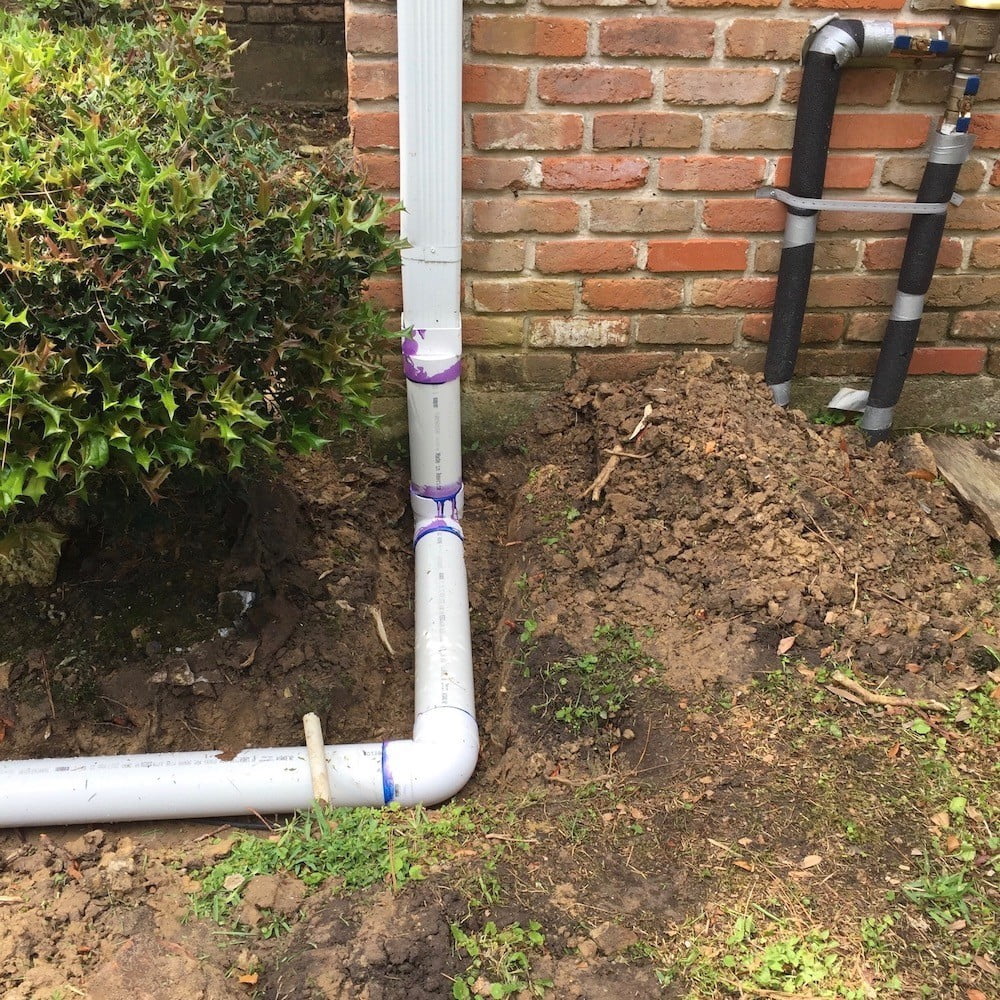
Downspout Drainage and Diverters
The first task a landscape drainage contractor does, is examine downspouts and diverters of a building. In most cases, roofs are the primary source of excessive water during rainy times. If the water is not guided away from the building, it can cause foundation problems and water retention problems. It will also tend to erode mulch and dirt from landscape beds or cause muddy grounds. Fill out our FREE drainage quote so we can better assist you in your drainage needs.
Frequently Asked Questions About Landscape Drainage
Welcome to our Frequently Asked Questions section! Here you’ll find comprehensive answers to your queries about landscape drainage, helping you understand and solve your outdoor water management needs.
Over 800+ Drainage Jobs Done
Houston Landscape Pros had been proudly servicing the Houston, Taxes and the surrounding areas since 2010. If you want to see our work or view our landscape drainage videos, please visit Houston Landscape Pros’ landscape gallery. By all means, we love hearing from our valued clients and sharing their experience with prospective customers. In fact, Here are some authentic reviews from happy customers.
“ Highly Recommend!!
Hire Houston Landscape Pros for our drainage landscape, front yard, backyard projects. From the beginning they was very professional and answered all of my questions thoroughly. Also, informed us a couple of days before the project began, and team showed up exactly when said they would (maybe I’ve had bad luck in the past, but this is extremely important to me). Project was finished faster than quoted and looks amazing. I highly recommend this company!!
“ Professionally Done!
Houston Landscape Pros did a wonderful job installing our French drain at my property! It was affordable, professionally done and, so far, very effective. Would highly recommend them any in need of landscape drainage and all landscaping needs!
“Excellent Job
Houston Landscape Pros crew did a lot of work: installing gravel, trenching a drainage pipe, removing old plants and planting new ones, and an “spring cleanup”. Roughly $6k worth of work. They did an excellent job, the crew worked hard and the proposal before work began went smoothly considering all the questions I had.
Landscape Drainage Contractor in Houston, Texas
Our team at Houston Landscape Pros consists entirely of professional, expert landscape drainage contractors. We are a professional landscape drainage company proudly serving the Houston area. Our landscape drainage contractors will take care of everything to ensure your drainage system is functioning properly. However, HLP does not repair existing drainage systems, and we cannot guarantee their performance
Call us: (713)396-3320


